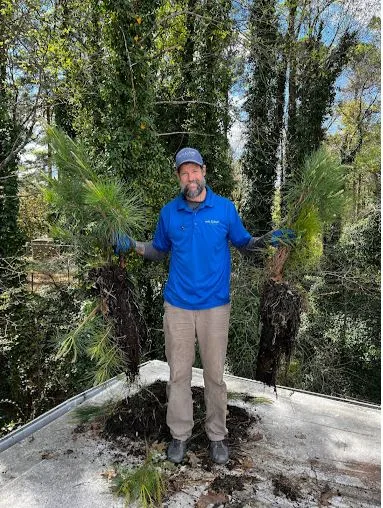How Weather Impacts Commercial Roof Longevity
One of the most important parts of a building is its roof, which protects the building from the weather, keeps it energy efficient, and supports the building’s structure. Still, the weather a business roof is exposed to over time has a big effect on how long it lasts. If property owners know how different climates affect roofing materials, like heavy rain or direct sunlight, they can take precautions and work with a reliable business roofer to make their investment last longer.
The Challenge of UV Radiation and Heat
One of the most common weather-related threats to a commercial roof is prolonged exposure to ultraviolet (UV) radiation. Over time, intense sunlight can cause roofing materials to become brittle, crack, or warp. This is especially true for flat or low-slope roofs made from materials like modified bitumen, EPDM, or TPO. Constant heat absorption can also lead to what’s known as “thermal cycling”—the daily expansion and contraction of materials. Without proper ventilation or reflective coatings, roofs in hot climates may deteriorate much faster.
A professional commercial roofer can help by recommending reflective coatings or cool roofing systems that reduce heat absorption and extend the roof’s functional lifespan.
Rainfall and Moisture Infiltration
Heavy rain and consistent moisture can compromise a roof’s waterproofing abilities. Ponding water on flat commercial roofs is a frequent issue, often resulting from poor drainage or clogged scuppers and downspouts. If standing water remains for extended periods, it can seep into the roofing membrane, leading to leaks, mold, and eventual structural damage.
Moisture also promotes the growth of algae and moss, which can degrade roofing materials and add unwanted weight to the roof structure. Regular inspections by a commercial roofer ensure that water drainage systems are functioning correctly and that potential vulnerabilities are addressed promptly.
Wind Damage and Storm Events
High winds are a serious threat, particularly in areas prone to hurricanes or seasonal storms. Strong gusts can lift roofing materials, tear away flashing, or dislodge entire sections of the roof. Even moderately strong winds can cause wear and tear over time, loosening seams and fasteners.
To combat this, a skilled commercial roofer can reinforce the roofing system with high-wind-rated materials and secure installation methods. They may also recommend periodic inspections after storm events to identify and repair minor damage before it becomes a larger issue.
Snow, Ice, and Freeze-Thaw Cycles
In colder climates, commercial roofs must endure the added weight of snow accumulation and the damaging effects of freeze-thaw cycles. Melting snow that refreezes overnight can create ice dams, which block proper drainage and force water beneath roofing layers. This can cause water damage inside and membrane breakdown before it should.
To mitigate winter-related damage, property owners should work with a commercial roofer to install proper insulation and ventilation. Roof heating systems, when appropriate, can also help prevent ice dams and keep drainage systems clear.
Hail and Abrasive Impact
Hailstorms can cause severe, often sudden damage to commercial roofs. Even small hailstones can create dents, punctures, or surface degradation, especially on metal and membrane roofs. Over time, this impact weakens the roof’s resistance to moisture and other weather-related stressors.
After a hailstorm, it’s crucial to have a commercial roofer conduct a thorough inspection to identify any compromised areas. Early detection allows for repairs that protect the roof from further deterioration and prevent costly replacements.
Final Thoughts
No matter where your business is located, the weather has a big impact on the state and life of your roof. On the bright side, weather-related damage can be greatly reduced with regular upkeep, smart material choices, and professional help from a business roofer. People who own businesses can make sure their commercial roofs last for many years by being cautious and fixing any problems as soon as they come up.





